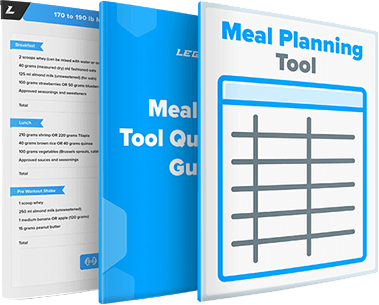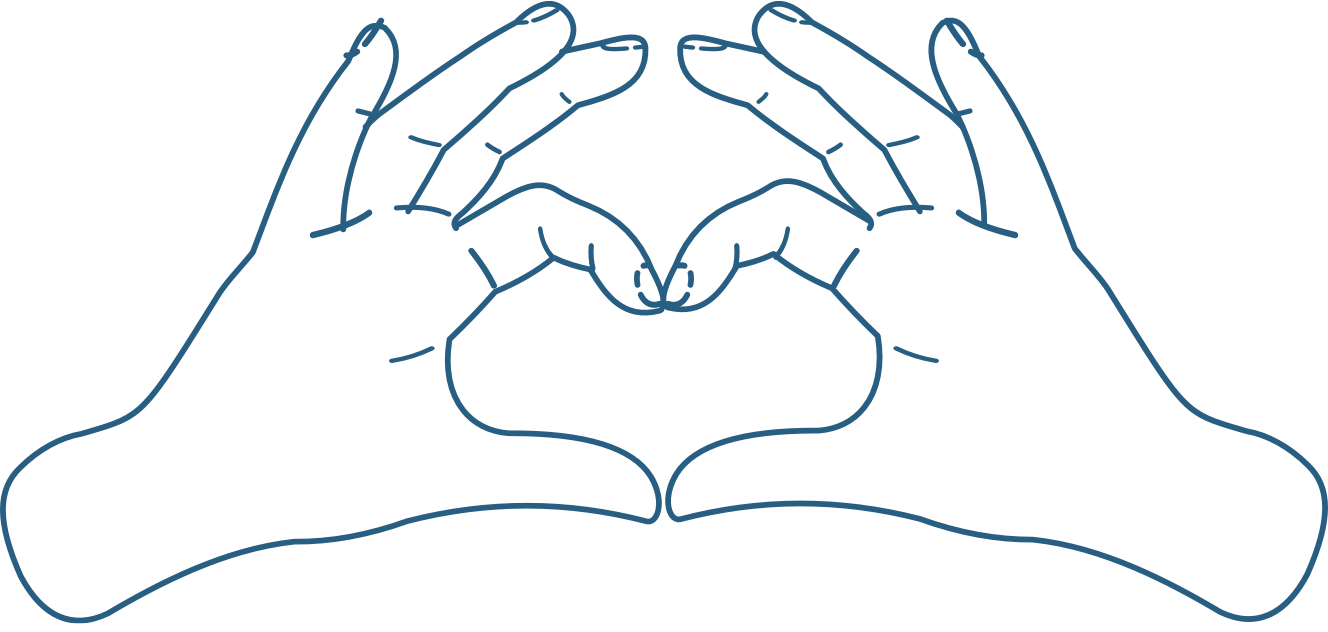Salt has been with us for thousands of years.
The Egyptians used it in religious rituals and trade.
The Greeks bought slaves with it.
The Romans paid their soldiers with it (hence the word “salary”).
European plutocracies ran on salt, Confederate troops suffered for want of it, and these days, it can be found in pantries everywhere.
Salt was once a precious resource and now it’s a humdrum condiment.
C’est la vie. ?
Salt–the most important mineral in human history–has become even less than a lowly condiment, actually.
It’s now one of the most demonized nutrients in our modern diets.
The US government has been warning us about the (supposed) dangers of salt for decades now, which include an increased risk of heart disease and stroke.
Newer research casts doubt on these assumptions, though, suggesting that it may not be as harmful as we once believed.
Well, in this episode, we’re going to break it all down and learn…
-What sodium is.
-Why sodium is (apparently) bad for you.
-How much sodium you should eat.
-How much sodium is too much.
-How to control your sodium intake.
And more…
Let’s get started.
TIME STAMPS:
3:27 – What is sodium?
5:06 – Why are we told that sodium is bad?
9:32 – How much sodium should I have every day?
12:33 – Does sodium intake affect weight loss?
13:55 – How do you reduce your sodium intake?
What did you think of this episode? Have anything else to share? Let me know in the comments below!
Transcript:
[00:00:00] A study conducted by scientists from the Center for Disease Control, the CDC, and Harvard University found that people with the highest ratio of sodium to potassium were twice as likely to die of a heart attack and had a 50 percent higher risk of death from any cause than people with the lowest ratio.[00:01:00] [00:02:00]
This is where I would normally plug a sponsor to pay the bills, but I’m not big on promoting stuff that I don’t personally use and believe in. So instead I’m just going to quickly tell you about something of mine, specifically my fish oil supplement, Triton. Now, Triton is a high potency, high purity, 100 percent re esterified triglyceride fish oil with added vitamin E to prevent oxidation and rancidity.
and natural lemon oil to prevent the noxious fish oil burps that we all know and hate. Furthermore, Triton is made from sustainably fished deep water anchovies and sardines and is molecularly distilled to [00:03:00] remove natural toxins and contaminants. So if you want to optimize your mental and physical health and performance, and reduce the risk of disease and dysfunction, then you want to head over to www.
legionathletics. com and pick up a bottle of Triton today. And just to show how much I appreciate my podcast peeps, use the coupon code podcast to checkout and you will save 10 percent on your entire order. And lastly, you should also know that I have a very simple 100 percent money back guarantee that works like a charm.
This, you either love my stuff or you get your money back, period. You don’t have to return the products, you don’t have to fill out forms, you don’t have to jump through any other hoops or go through any other shenanigans. You really can’t lose here. Head over to www. legionathletics. com now, place your order and see for yourself why my supplements have thousands of rave reviews all over the internet.
And if for whatever reason they’re just not for [00:04:00] you, contact us and we will give you a full refund on the spot. All righty, that is enough shameless plugging for now at least. Let’s get to the show.
Salt has been with us for thousands of years now. The Egyptians used it in their religious You. Rituals and in trade, the Greeks bought slaves with it. The Romans paid their soldiers with salt, and that’s where the word salary comes from, in case you didn’t know. European plutocracies ran almost exclusively on salt.
Confederate troops suffered for the want of it. And of course, these days, salt can be found in pantries everywhere. It was once a precious resource, and now it’s just a humdrum condiment. And it’s actually even less than a lowly condiment. Now it’s one of the most demonized nutrients in our modern diets.
The U S government in particular has been warning [00:05:00] us about the supposed dangers of salt for decades now due to its sodium content, of course. And in this podcast, we are going to break it all down and learn what sodium is, why it is apparently bad for you, how much sodium you should eat. How much sodium is too much?
How to control your sodium intake and more. Okay, so what is sodium? Sodium is a type of mineral known as an electrolyte, which is a substance that increases the electrical conductivity of a fluid when dissolved in it. Now, electrolytes are crucial to human life because our bodies are comprised of trillions of cells that rely on electrical signals to function.
Now those signals must pass through fluids to reach their various destinations, and those fluids require electrolytes to carry the signals effectively. And sodium is one of the most important electrolytes in our [00:06:00] bodies. It works together with potassium to operate a pump like mechanism built into cells that is vital for maintaining their potential for action.
And this cellular pump is always active. It’s always pushing sodium ions out and potassium ions in, and it’s built to ensure that cells contain a relatively high amount of potassium ions and relatively low amount of sodium ions. And if you want to see a good video of how this works, head over to YouTube and search for Khan Academy, K H A N Academy, sodium potassium.
The long story short, though, is your cells use this pump to maintain a balance of sodium, potassium, and fluid inside their walls. Sodium also helps regulate blood volume and is involved in muscle and nerve function. Again, it’s a very important mineral. Now, given its obvious importance, [00:07:00] why are we told that salt and sodium is bad?
This collective salt sodium anxiety began back in the early 1900s when French doctors reported that six of their high blood pressure patients also consumed a high salt diet. Those fears were then compounded in the 1970s when Louis Dahl of the Brookhaven National Laboratory induced high blood pressure in rats by feeding them a very high sodium diet.
Dahl also suggested that countries with high sodium diets like Japan, for example, also had higher rates of high blood pressure and strokes. More recently though, his findings and really the underpinnings of sodium fear in general have begun to unravel. Newer research indicates that this elemental compound may not be as harmful as previously believed.
Believed. Serious counter signaling started with an extensive review of the sodium [00:08:00] literature published in 2003, which concluded the following quote, there is little evidence for long term benefit from reducing salt intake. And then eight years later, In 2011, a meta analysis of seven studies encompassing more than 6, 250 subjects bolstered these findings, concluding that there is no evidence supporting cutting salt as an effective means of reducing the risk for heart attack, stroke, or death in those with either normal or high blood pressure.
And even further research was published in 2015 that found that a lower consumption of sodium may actually be associated with a greater risk of dying from heart disease. And so what the hell is going on? What does all this mean? Studies show that genetics and cultural factors come into play here, meaning that some people are just inherently more sensitive to sodium than others.
And we also know that eating too [00:09:00] little sodium can increase the risk of various types of disease and dysfunction, including increased levels of LDL cholesterol, which is the quote unquote bad cholesterol, as well as triglycerides, higher levels of insulin resistance, and even type two diabetes. And if we’re going to talk sodium intake and general health, then we also have to talk about potassium intake because research shows that the ratio of sodium to potassium intake is very important.
The Institute of Medicine, for example, recommends that we get about 4. 7 grams of potassium per day. And as of 2010, the average American intake was about 2. 64 grams per day. That makes insufficient potassium intake one of the most common nutrient deficiencies in Western diets, which has also been borne out in other research.
Now, unsurprisingly, The best sources of potassium are the types of foods that most [00:10:00] people don’t eat very much of, fruits and vegetables, plant based foods, which is yet another reason to ensure that you are eating a generally nutritious diet, that you are getting the majority of your calories from relatively unprocessed, highly nutritious foods, which mostly comes down to fruits, vegetables, whole grains, nuts, and lean protein.
Now this understanding of the relationship between sodium and potassium intake is important because it shows that sodium intake per se may not be nearly as harmful as an imbalance between sodium and potassium. And we can find evidence of this in the literature, specifically a study conducted by scientists from the Center for Disease Control, the CDC, and Harvard University found.
That people with the highest ratio of sodium to potassium were twice as likely to die of a heart attack and had a 50 percent higher risk of death from any cause than people with the lowest [00:11:00] ratio. So the bottom line here is this, As long as you’re not eating a large amount of prepackaged or highly processed foods and you don’t have a strange obsession with over salting every meal that you eat, and as long as you are making sure that you’re getting enough potassium as well, it is very unlikely that you are going to run into any sodium related problems.
Hey, quickly, before we carry on, if you are liking my podcast, would you please help spread the word about it? Because no amount of marketing or advertising gimmicks can match the power of word of mouth. If you are enjoying this episode and you think of someone else who might enjoy it as well, please do tell them about it.
It really helps me. And if you are going to post about it on social media, definitely tag me so I can say, Thank you. You can find me on Instagram at [00:12:00] muscle for life fitness, Twitter at muscle for life and Facebook at muscle for life fitness. Okay. So now let’s talk about how much sodium you should actually be having every day.
And the first thing you should know is that sodium is. It’s similar to saturated fat in that we used to think it just causes heart disease and it’s just bad for us. But now we are learning otherwise. Some people want to believe that both of these foods have been completely vindicated, completely absolved, and we can just eat as much as we want.
We can eat as much sodium and as much saturated fat as we want without any fear of health repercussions. And I disagree with that. As far as saturated fat goes. Prominent nutrition and cardiology researchers still maintain that there is a strong association between high intake of saturated fatty acids and heart disease and that we should still follow the generally accepted dietary guidelines for saturated fat intake, which is less than 10 percent of our [00:13:00] daily calories.
Until we know more. Now as far as sodium goes, unless you know for a fact that a high sodium diet does not raise your blood pressure, which you of course could determine this, but unless you know that you should play it safe. You should stick with the USDA’s recommendation of about 2. 3 grams of sodium per day.
And they recommend 1. 5 grams per day for African Americans, people with hypertension, diabetes, or chronic kidney disease. And people aged 51 and up. You should also know that people who sweat regularly may need more sodium to offset what you lose through sweating. And so in my case, I eat around three and a half to four grams per day because I’m sweating a bit in the gym.
And then some days I’m also doing cardio in addition to my weightlifting, which of course is more sweating. And at the moment I’m cutting. And yohimbine, which I’m taking I do my workouts fast when I’m cutting with yohimbine caffeine and sinephrine and yohimbine makes me [00:14:00] sweat. So anyways, my sodium intake is around four grams per day.
Now, if you are like most people, you probably haven’t been paying attention to your sodium intake and you have no idea how much sodium you’re eating. And you have no idea how much sodium is in the various foods that you eat. And for that, let’s start with salt. Salt contains. 2. 3 grams of sodium per teaspoon.
And that’s why so many people eat so much more sodium than they should. And a lot more than they realize as well. Furthermore, the following foods are notoriously high in sodium and of course, very popular among Western dieters. So yeast Containing breads, chicken and mixed chicken dinners, pizza, pasta dishes very high in sodium cold cuts like deli meat, super high in sodium.
So if you want to check your current sodium intake, what I recommend is open up Excel and head over to calorie king. com and start adding up the sodium content of the foods that you commonly eat. And [00:15:00] then don’t forget to add in at least guesstimates of how much salt you’re using as well. Let’s now talk about sodium and weight loss, because you’ve probably heard that sodium intake can affect weight loss, and yes, this is true.
Sodium brings water into cells, which is why eating large amounts of it can cause a rather large increase in water retention, or bloating, as most people refer to it. And I’m sure you’ve seen this the morning after eating a large salty cheat meal where you just look fatter than usual, soft. And it doesn’t really make sense because your calories may have been reasonable, but what in the mirror.
is not reasonable. And this is also why when you restrict your sodium intake, water retention decreases. Now, potassium has the opposite effect on cellular fluid levels. So whereas sodium sucks fluid in, potassium pumps it out, which explains why restricting your potassium [00:16:00] intake can increase fluid retention and why increasing your intake of potassium can decrease it.
So the practical tip here is if you want to avoid inexplicable weight loss plateaus when you’re cutting, and if you want to make your weight loss as linear as possible, it’s never going to be perfectly linear, but if you want to reduce as much variance as possible, then make sure you are keeping an eye on your sodium and potassium intakes.
Okay, so now, how do you reduce your sodium intake? So let’s say you’ve analyzed your sodium intake and you realize that it’s just too high. And you need to bring it down, and you probably also need to bring your potassium intake up. That’s where most people are at. Fortunately, this is pretty easy to do.
So first, you can of course cut back on your salt, and you can also cut back on certain seasonings. Many foods contain small amounts of sodium naturally, but most of the sodium in our diets Salt, which is about 40 percent sodium and 60 percent chloride. So what you want to do is [00:17:00] use salt sparingly. And if needed, what you can use is a potassium based salt substitute.
Those don’t taste quite as good as salt, but I’d say they’re 70 percent as good as salt and it’s primarily potassium. So it also bumps up your potassium intake. Not only brings your sodium intake down. Also allowing you to achieve some of that saltiness. It also brings your potassium intake up. You should also watch out for mixed seasonings like chili or pizza seasoning because these often contain quite a bit of sodium.
Second little tip is to just look at the sodium content of any canned or prepackaged foods that you eat because they are often loaded with sodium as a preservative. You should also avoid deli and other cured meats for the same reason. It also helps to understand food labels. So when a food has sodium free on the packaging, what that means is there is less than five milligrams of sodium per serving with no sodium chloride, which is table salt.
If a food is very low sodium, what that means is there [00:18:00] is 35 milligrams of sodium or less per serving. Low sodium means 140 milligrams of sodium or less per serving. Reduced or less sodium means at least 25 percent less sodium per serving than the regular food. And finally, light in sodium means that the sodium has been reduced by at least 10%.
50 percent per serving. Another little tip is to be careful with sauces and salad dressings because many of them are very high in sodium because salt makes things delicious. For example, Worcestershire sauce, which I love, and soy sauce, which I also love, and Italian salad dressing, which is okay, I don’t particularly love it, I’d say I like it, are very high in sodium.
You should also know that cheese contains a lot of sodium. A lot of people don’t know that just one ounce of American cheese, for example, has nearly 500 milligrams of sodium. And my last tip here is to include more potassium rich foods in your meal plans. My personal [00:19:00] favorite choices are things like beans, which contain two to three grams of potassium per cup, dark leafy greens.
My go to is spinach these days, which dark, most dark leafy greens contain about. 500 to 1500 milligrams of potassium per cup. Bananas are great. One of my favorite fruits. I eat one every day before and often after working out. And these days I’m again, training fasted, so I’m not eating it before I’m just eating after.
But anyways, a banana, a medium sized banana contains four to 500 milligrams of potassium. Potatoes contain quite a bit of potassium, about 900 milligrams for a medium sized potato squash. Another good source, 100 to 500 milligrams of potassium for a medium sized. Squash yogurt is a good source of potassium, providing 250 to about 400 milligrams per cup.
My favorite yogurt these days is Skyr, S K Y R, which is the Icelandic take on Greek yogurt. I think it’s really good. I like it more than Greek yogurt because it’s very low in fat and carbs. [00:20:00] But it’s also very creamy and it’s sweeter than the equivalent in Greek yogurt. So it’s like a 2%. I’d say, yeah, it’s not quite the 0%.
It’s like a 2 percent Greek yogurt that tastes more like a three or 4 percent yogurt. So anyways, if you haven’t tried skier S K Y R, I recommend you check it out. And the brand that I like is, I think it’s just Icelandic, actually Icelandic skier, Icelandic cultures, something like that. Okay. Moving on salmon.
Contains about a hundred milligrams of potassium per ounce. So that’s a great source of potassium. Avocado, another great source of potassium and also of monounsaturated fat. And avocado contains about one gram of potassium per fruit. And finally, we have mushrooms. Another one of my favorite vegetables for multiple reasons.
And one of the reasons is great source of potassium, three to 400 milligrams of potassium per cup. Now, if at this point you’re frowning at the prospect of having to plan or track yet another thing in your diet, I do understand. [00:21:00] The good news though is you don’t have to track your sodium potassium intake forever.
Instead, what I recommend is that you plan and track it temporarily to see what works for you and what doesn’t. And then you just use common sense and maintaining good habits going forward. And you can supplement. with potassium as well. I used to do that, but then I already take enough pills and powders.
So I figured that I would just work some more potassium rich foods into my diet and not have to take potassium pills. And if you’re going to supplement, you have to make sure you know how to dose it properly. Because if you buy pills, I believe the cap is a little 99 milligrams of potassium per pill, because if you take too much potassium, you can have a heart attack.
So if you’re going to buy potassium in bulk, make sure you know what you’re doing with the dosing. Now, once you’ve stopped tracking your sodium and potassium intake, that means it’s going to fluctuate. And occasionally one of the other is going to spike and one of the others going to plummet.
And that’s fine. The goal isn’t to be spot on perfect with either of them every single day. It’s [00:22:00] just to get it more right than wrong more often than not. Okay, so to wrap up here and summarize, the bottom line is when it comes to dieting, most people who are in the know pay close attention to their calories, to their macros, sometimes to certain micronutrients, but often give little thought to sodium and potassium.
And I’d say that’s better than just complete dietary ignorance, of course, but it does leave much to be desired. Now, I should know because I used to be one of those people. My diet wasn’t ever really a travesty, but many years ago, when I didn’t really know what I was doing, I’d say across the board in and outside of the gym, and my diet wasn’t particularly micronutrient rich.
I’d Either. And these days now, my diet has since become a lot more diversified though, in terms of my food choices. And now I eat quite a bit more fruits, vegetables, and other quote unquote, super foods, I guess you could say highly nutritious foods. And The difference [00:23:00] has been fairly remarkable. Actually, it hasn’t affected my body composition, of course, but it has definitely impacted my energy levels, my mood, and my cognitive abilities, which I feel have improved despite getting older.
I feel like I am more energetic now and in generally better spirits. and have a sharper mind than I did five years ago. And of course, I can’t attribute all of that to just diet, but I do think that has helped. And obviously that can be backed up with scientific research. It’s not a stretch, of course, to say eating a lot of nutritious foods is going to give you more energy.
It’s going to give you a better mood. It’s going to make your mind work better to make your brain work better. Yeah. That’s not particularly controversial. I’ve also found that I need less sleep these days to function optimally than I did many years ago, which again, it might be partially a consequence of getting older, right?
Because You generally need less [00:24:00] sleep. I’m 33 now. It makes sense that I need less sleep now than when I was 23, but Hey, I’ll take it. It’s well, it’s a welcome improvement. And I also noticed that as I improved my diet, my body seemed to recover a bit faster from my workouts and other physical activities, which I was then able to use to of course, push myself harder in the gym.
So if you are all about calories and macros, and you don’t pay much attention to micros. I want you to try a little experiment just for a month and see what comes of it. So here’s the experiment. One, eat three cups of vegetables every day. And you get bonus points if you work in some leafy greens, if you work in some red and orange veggies, and if you work in some beans, and if you’d like maybe something starchy like potato or Sweet potato.
So the second part of this experiment, this challenge is to eat two cups of fruit per day. And if you want bonus points, go for colorful fruits like berries, plums, and cherries, because the [00:25:00] pigments that these fruits contain, what the molecules that give these fruits, their color are very, healthy.
They are powerful antioxidants. The third part to this experiment challenge is to get the majority of your non fruit and vegetable carbs from nutritious, relatively unprocessed foods. So these days my go tos are whole grains. Like oatmeal is great. I personally like eating oatmeal. It’s also easy to make and you can put fruit into it.
So I like to put both nuts, walnuts to get some additional healthy fat, quote unquote, as well as blueberries. And I sweeten it with stevia. Put a little milk in it. It’s yummy. But you can also go in for seeds, nuts, and dairy. And lastly, I recommend that you keep your sodium and potassium intake in acceptable ranges.
Now, do those four things for just a month and you might be surprised at how much better you feel. Hey there, it is Mike again. I hope you enjoyed this episode and found it interesting and helpful. And if you did, and [00:26:00] don’t mind doing me a favor and want to help me make this the most popular health and fitness podcast on the internet, then please leave a quick review of it on iTunes or wherever you’re listening from.
This not only convinces people that they should check the show out, it also increases its search visibility. And thus helps more people find their way to me and learn how to build their best bodies ever to. And of course, if you want to be notified when the next episode goes live, then just subscribe to the podcast and you won’t miss out on any of the new goodies.
Lastly, If you didn’t like something about the show, then definitely shoot me an email at mike at muscleforlife. com and share your thoughts on how you think it could be better. I read everything myself, and I’m always looking for constructive feedback, so please do reach out. Alright, that’s it.
Thanks again for listening to this episode, and I hope to hear from you soon. Soon. And lastly, this episode is brought to you by me. Seriously though, I’m not big on promoting stuff that I don’t personally use [00:27:00] and believe in. So instead, I’m going to just quickly tell you about something of mine, specifically my fish oil supplement.
Triton. Now, Triton is a high potency, high purity, 100 percent re esterified triglyceride fish oil with added vitamin E to prevent oxidation and rancidity and natural lemon oil to prevent the noxious fish oil burps that we all know and hate. Furthermore, Triton is made from sustainably fished deep water anchovies and sardines and is molecularly distilled to remove natural toxins and contaminants.
So if you want to optimize your mental and physical health and performance and reduce the risk of disease and dysfunction, then you want to head over to www. legionathletics. com and pick up a bottle of Triton today. And just to show how much I appreciate my podcast, Peeps use the coupon code podcast to check out and you will save 10 percent on your entire order.
And lastly, [00:28:00] you should also know that I have a very simple 100 percent money back guarantee that works like this. You either love my stuff or you get your money back period. You don’t have to return the products. You don’t have to fill out forms. You don’t have to jump through any other hoops or go through any other shenanigans.
So you really can’t lose here. Head over to www. legionathletics. com now, place your order, and see for yourself why my supplements have thousands of rave reviews all over the internet. And if for whatever reason, they’re just not for you, contact us and we will give you a full refund on the spot.
Scientific References +
- Jürgens, G., & Graudal, N. (2002). Effects of low sodium diet versus high sodium diet on blood pressure, renin, aldosterone, catecholamines, cholesterols, and triglyceride. In The Cochrane Database of Systematic Reviews (Issue 1). John Wiley & Sons, Ltd. https://doi.org/10.1002/14651858.cd004022
- Taylor, R. S., Ashton, K. E., Moxham, T., Hooper, L., & Ebrahim, S. (2011). Reduced dietary salt for the prevention of cardiovascular disease: A meta-analysis of randomized controlled trials (cochrane review). In American Journal of Hypertension (Vol. 24, Issue 8, pp. 843–853). Am J Hypertens. https://doi.org/10.1038/ajh.2011.115
- Kalogeropoulos, A. P., Georgiopoulou, V. V., Murphy, R. A., Newman, A. B., Bauer, D. C., Harris, T. B., Yang, Z., Applegate, W. B., & Kritchevsky, S. B. (2015). Dietary sodium content, mortality, and risk for cardiovascular events in older adults: The health, aging, and body composition (Health ABC) study. JAMA Internal Medicine, 175(3), 410–419. https://doi.org/10.1001/jamainternmed.2014.6278
- Sanada, H., Jones, J. E., & Jose, P. A. (2011). Genetics of salt-sensitive hypertension. Current Hypertension Reports, 13(1), 55–66. https://doi.org/10.1007/s11906-010-0167-6
- Mayo Clinic Staff. (n.d.). Triglycerides: Why do they matter? - Mayo Clinic. Retrieved October 12, 2020, from https://www.mayoclinic.org/diseases-conditions/high-blood-cholesterol/in-depth/triglycerides/art-20048186
- Garg, R., Williams, G. H., Hurwitz, S., Brown, N. J., Hopkins, P. N., & Adler, G. K. (2011). Low-salt diet increases insulin resistance in healthy subjects. Metabolism: Clinical and Experimental, 60(7), 965–968. https://doi.org/10.1016/j.metabol.2010.09.005
- Ekinci, E. I., Clarke, S., Thomas, M. C., Moran, J. L., Cheong, K., Macisaac, R. J., & Jerums, G. (2011). Dietary salt intake and mortality in patients with type 2 diabetes. Diabetes Care, 34(3), 703–709. https://doi.org/10.2337/dc10-1723
- Yang, Q., Liu, T., Kuklina, E. V., Flanders, W. D., Hong, Y., Gillespie, C., Chang, M. H., Gwinn, M., Dowling, N., Khoury, M. J., & Hu, F. B. (2011). Sodium and potassium intake and mortality among US adults: Prospective data from the third national health and nutrition examination survey. Archives of Internal Medicine, 171(13), 1183–1191. https://doi.org/10.1001/archinternmed.2011.257
- Food and Nutrition Board, INSTITUTE OF MEDICINE OF THE NATIONAL ACADEMIES, & THE NATIONAL ACADEMIES PRESS. (2005). Dietary reference intakes for water, potassium, sodium, chloride, and sulfate. In Dietary Reference Intakes for Water, Potassium, Sodium, Chloride, and Sulfate. National Academies Press. https://doi.org/10.17226/10925
- Hoy, M. K., & Goldman, J. D. (2012). Potassium Intake of the U.S. Population What We Eat in America (Issue 10). www.ars.usda.gov/ba/bhnrc/fsrg
- Pedersen, J. I., James, P. T., Brouwer, I. A., Clarke, R., Elmadfa, I., Katan, M. B., Kris-Etherton, P. M., Kromhout, D., Margetts, B. M., Mensink, R. P., Norum, K. R., Rayner, M., & Uusitupa, M. (2011). The importance of reducing SFA to limit CHD. In British Journal of Nutrition (Vol. 106, Issue 7, pp. 961–963). Cambridge University Press. https://doi.org/10.1017/S000711451100506X
- Anastasiou, C. A., Kavouras, S. A., Arnaoutis, G., Gioxari, A., Kollia, M., Botoula, E., & Sidossis, L. S. (2009). Sodium replacement and plasma sodium drop during exercise in the heat when fluid intake matches fluid loss. Journal of Athletic Training, 44(2), 117–123. https://doi.org/10.4085/1062-6050-44.2.117
- Heer, M., Frings-Meuthen, P., Titze, J., Boschmann, M., Frisch, S., Baecker, N., & Beck, L. (2009). Increasing sodium intake from a previous low or high intake affects water, electrolyte and acid-base balance differently. British Journal of Nutrition, 101(9), 1286–1294. https://doi.org/10.1017/S0007114508088041
- Singer, D. R. J., Markandu, N. D., Buckley, M. G., Miller, M. A., Sagnella, G. A., Lachno, D. R., Cappuccio, F. P., Murday, A., Yacoub, M. H., & MacGregor, G. A. (1994). Blood pressure and endocrine responses to changes in dietary sodium intake in cardiac transplant recipients: Implications for the control of sodium balance. Circulation, 89(3), 1153–1159. https://doi.org/10.1161/01.CIR.89.3.1153
- Gallen, I. W., Rosa, R. M., Esparaz, D. Y., Young, J. B., Robertson, G. L., Batlle, D., Epstein, F. H., & Landsberg, L. (1998). On the mechanism of the effects of potassium restriction on blood pressure and renal sodium retention. American Journal of Kidney Diseases, 31(1), 19–27. https://doi.org/10.1053/ajkd.1998.v31.pm9428447










